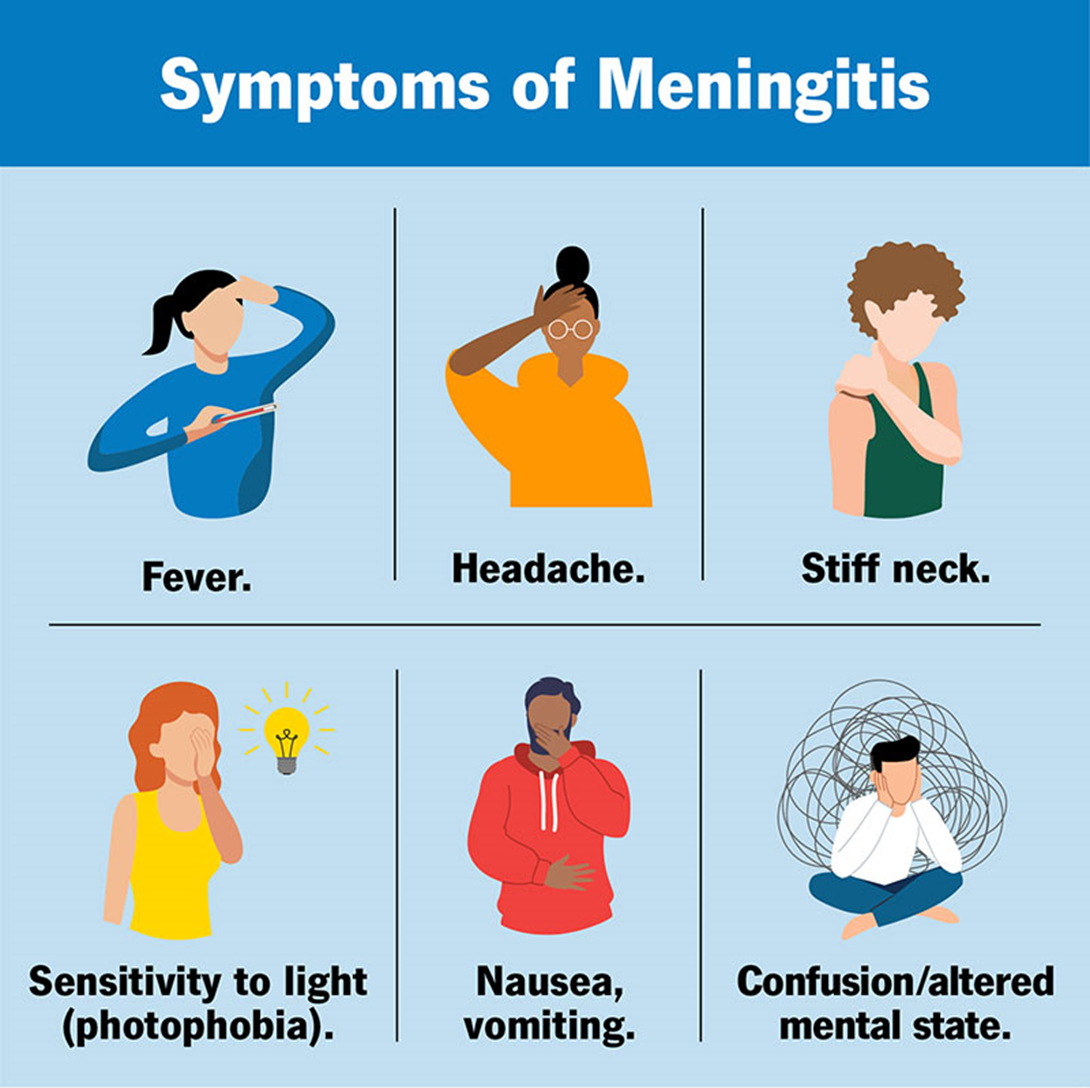A nurse is caring for an adolescent who was brought to the emergency department (ED) with a high fever, headache, and neck stiffness. The nurse reviews the adolescent's cerebrospinal fluid (CSF) analysis results and notes the following:
- WBC count 300 cells/microliter (normal range: 0 to 10 cells/microliter)
- Protein 45 mg/dL (normal range: 15 to 45 mg/dL)
- Glucose 40 mg/dL (normal range: 50 to 75 mg/dL)
- Color Turbid (normal: clear and colorless)
The nurse should suspect that the adolescent has which of the following conditions?
Bacterial meningitis.
Viral meningitis.
Encephalitis.
Brain abscess.
The Correct Answer is A
Choice A reason: Bacterial meningitis is a probable condition, as it is an infection of the membranes that cover the brain and spinal cord, caused by various bacteria, such as Streptococcus pneumoniae, Neisseria meningitidis, or Haemophilus influenzae. The adolescent has many signs and symptoms of bacterial meningitis, such as fever, headache, and neck stiffness.

Choice B reason: Viral meningitis is not a likely condition, as it is an infection of the membranes that cover the brain and spinal cord, caused by various viruses, such as enteroviruses, herpes simplex virus, or mumps virus. The adolescent has some signs and symptoms of viral meningitis, such as fever, headache, and neck stiffness, but they are usually less severe than bacterial meningitis.
Choice C reason: Encephalitis is not a probable condition, as it is an inflammation of the brain tissue, usually caused by viral infections, such as herpes simplex virus, West Nile virus, or rabies virus. The adolescent has some signs and symptoms of encephalitis, such as fever, headache, and altered mental status, but they are usually accompanied by focal neurological deficits, such as seizures, paralysis, or cranial nerve palsies.
Choice D reason: Brain abscess is not a definite condition, as it is a collection of pus within the brain tissue, usually caused by bacterial infections that spread from other parts of the body, such as the ear, sinus, or lung. The adolescent has some signs and symptoms of brain abscess, such as fever, headache, and altered mental status, but they are usually accompanied by focal neurological deficits, such as seizures, paralysis, or cranial nerve palsies.
Nursing Test Bank
Naxlex Comprehensive Predictor Exams
Related Questions
Correct Answer is D
Explanation
Choice A reason: This is not a correct description of Bryant traction. This type of traction does not involve pins or wires inserted into the bone. It is a skin traction that uses adhesive straps or bandages attached to the skin of the lower legs.
Choice B reason: This is not a correct description of Bryant traction. This type of traction does not maintain the leg in an extended position. It flexes the hip and knee at a 90-degree angle and suspends the leg in the air.
Choice C reason: This is not a correct description of Bryant traction. This type of traction does not use a sling under the knee of the affected leg. It uses a spreader bar to keep the legs apart and prevent rotation.
Choice D reason: This is a correct description of Bryant traction. This type of traction elevates the buttocks slightly off of the bed to provide countertraction and alignment of the fractured bone.

Correct Answer is B
Explanation
Choice A reason: Watching a video game in the playroom is not a good activity for a child who requires airborne precautions, as it may expose the child and other children to the risk of infection. Airborne precautions are used for patients who have diseases that are transmitted by small droplets that can remain suspended in the air and travel over long distances, such as tuberculosis, chickenpox, or measles. The child should stay in a private room with negative air pressure, high-efficiency particulate air (HEPA) filtration, and respiratory protection for health care workers and visitors.
Choice B reason: Putting a large-piece puzzle together is a good activity for a child who requires airborne precautions, as it can be done in the child's room and does not involve close contact with others. It is also developmentally appropriate for a 4-year-old child, as it helps to develop fine motor skills, cognitive skills, and problem-solving skills. The nurse should provide the child with a variety of puzzles that are colorful, fun, and challenging, but not frustrating.
Choice C reason: Constructing a model airplane is not a good activity for a child who requires airborne precautions, as it may involve small pieces that can be easily lost, swallowed, or inhaled. It may also be too difficult or complex for a 4-year-old child, who may not have the attention span, dexterity, or patience to complete the task. The nurse should choose activities that are safe, simple, and suitable for the child's age and abilities.
Choice D reason: Pulling a wagon with toys in the hallway is not a good activity for a child who requires airborne precautions, as it may expose the child and other people to the risk of infection. The child should not leave the room unless it is necessary for diagnostic or therapeutic procedures. If the child has to leave the room, the nurse should ensure that the child wears a mask and follows the infection control guidelines. The nurse should also minimize the movement and transport of the child.
Whether you are a student looking to ace your exams or a practicing nurse seeking to enhance your expertise , our nursing education contents will empower you with the confidence and competence to make a difference in the lives of patients and become a respected leader in the healthcare field.
Visit Naxlex, invest in your future and unlock endless possibilities with our unparalleled nursing education contents today
Report Wrong Answer on the Current Question
Do you disagree with the answer? If yes, what is your expected answer? Explain.
Kindly be descriptive with the issue you are facing.
